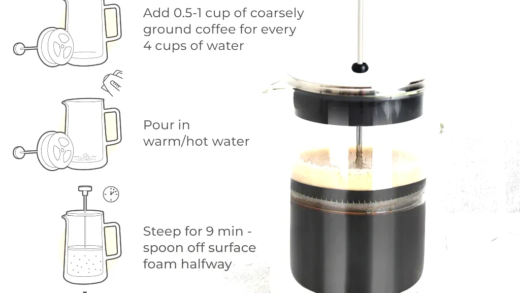This article explores the factors influencing wave size on the U.S. West Coast, including ocean currents, wind impact, geographical features, and seasonal changes. It compares wave generation between the Pacific and Atlantic Oceans and discusses how storms affect wave size. Additionally, it highlights surfers’ preferences for West Coast waves and includes personal anecdotes from a surfer’s experience.
Wave Size and Ocean Currents: How They Interact
Wave size factors on the West Coast are significantly influenced by ocean currents. These currents act like highways in the ocean, transporting water across vast distances. For instance, the California Current flows southward, bringing cold water from the north. This can lead to larger and more powerful waves, especially during winter months.
Here are some key points about how ocean currents affect wave height:
- Temperature: Cold currents can create denser water, which can enhance wave formation.
- Direction: Currents moving toward the shore can amplify wave size by pushing water into shallower areas.
- Interaction with Wind: Currents can alter wind patterns, which further influences wave height.
Understanding these interactions can help surfers and beachgoers anticipate wave conditions better. Observing ocean currents provides insights into when to expect larger waves, making it crucial for those who enjoy the ocean.
Wind’s Role in Creating Bigger Waves: What’s the Deal?
Wind plays a vital role in forming bigger waves on the West Coast. The stronger and more consistent the wind, the larger the waves. When wind blows across the ocean’s surface, it transfers energy to the water, creating waves. This energy is crucial for wave size factors.
Consider the following aspects of how wind impacts wave formation:
- Wind Speed: Higher wind speeds lead to larger waves. For example, gusts exceeding 25 knots can create impressive surf.
- Wind Duration: The longer the wind blows over the water, the more energy is transferred, resulting in bigger waves.
- Fetch: This refers to the distance over water that the wind travels. A longer fetch increases wave size.
For surfers, knowing how wind influences waves can help them choose the best times to hit the beach. A windy day isn’t always bad; it could mean epic surf conditions.
Geographical Features and Their Impact on Wave Size
Geographical features significantly impact wave size on the West Coast. The coastline’s shape, the presence of reefs, and underwater topography all play essential roles in wave formation.
Here are some geographical factors that influence wave height:
- Coastal Shape: Curved coastlines can funnel waves, increasing their height.
- Reefs: Coral reefs and rocky outcrops can break waves and create larger swells.
- Depth Changes: Shallow areas near the coast can cause waves to steepen and break more dramatically.
These features not only affect wave size but also create unique surfing conditions. Surfers often seek out these geographical characteristics to find the best waves. Recognizing how these elements work together can enhance any beachgoer’s experience.
Pacific vs Atlantic: Wave Generation Differences
Wave size factors vary significantly between the Pacific and Atlantic Oceans. The Pacific Ocean, with its vast expanse, generates larger and more powerful waves compared to the Atlantic. This is mainly due to its size and the nature of the wind patterns that prevail over it.
Here are some key differences in wave generation:
- Wind Patterns: The Pacific experiences consistent trade winds that can produce larger swells. In contrast, the Atlantic often has more variable winds, which can lead to smaller waves.
- Storm Activity: The Pacific is prone to more intense storms, which can lead to significant wave heights. The Atlantic, while it has hurricanes, doesn’t generate the same constant swell.
- Geography: Coastal features in the Pacific, such as offshore islands and reefs, can enhance wave size, while the Atlantic’s coastline is often more straight and less conducive to wave amplification.
Understanding these differences can help surfers and beachgoers know what to expect when choosing where to surf. The Pacific offers consistent and powerful waves, making it a preferred choice for many.
Storms and Weather Patterns: How They Affect Waves
Storms are a significant factor influencing wave size on the West Coast. When storms occur, they generate strong winds that transfer energy to the ocean surface, creating larger waves. Understanding how these weather patterns interact with ocean conditions is essential for predicting wave sizes.
Key points regarding storms and wave size:
- Wind Speed: Higher wind speeds during storms can create massive waves. For instance, storms with winds exceeding 40 knots can generate waves over 20 feet high.
- Duration of Storm: The longer a storm lasts, the more energy is transferred to the ocean, leading to larger waves.
- Storm Swell: This term refers to the swells generated by distant storms. These swells can travel thousands of miles and still produce significant waves when they reach the shore.
Surfers often keep an eye on storm forecasts to determine the best times to catch big waves. Storms may seem daunting, but they are a key player in creating the epic surf conditions many seek.
Surfers’ Preferences: Why West Coast Waves Rock
Surfers often prefer West Coast waves for several reasons. The unique conditions and characteristics of these waves make them ideal for surfing. Understanding these preferences can help newcomers appreciate what makes West Coast surfing special.
Here are some reasons why surfers love West Coast waves:
- Consistent Swells: The Pacific Ocean provides more consistent swells compared to other regions, making it easier for surfers to find good conditions year-round.
- Variety of Breaks: From beach breaks to point breaks, the West Coast has diverse surf spots that cater to all skill levels, enhancing the surfing experience.
- Surf Culture: The vibrant surf culture on the West Coast attracts surfers from around the world, creating a sense of community and shared passion for the sport.
These elements combine to make West Coast waves a top choice for surfers. Whether you’re a seasoned pro or just starting, the waves here offer something for everyone.
Seasonal Changes: Wave Size Variations on the West vs East Coast
Wave size factors differ notably between the West and East Coasts due to seasonal changes. Understanding these variations can enhance the surfing experience and inform beachgoers about optimal conditions.
On the West Coast, winter typically brings larger swells due to more powerful storms in the Pacific. In contrast, the East Coast often experiences its biggest waves during the late summer and fall, driven by hurricanes and tropical storms. Here are key points highlighting these differences:
- Winter Swells: On the West Coast, winter storms generate consistent, powerful swells ideal for surfers.
- Hurricane Season: The East Coast relies on hurricanes for its wave size, with conditions peaking from August to October.
- Local Weather Patterns: Each coast has unique weather patterns that affect wave conditions throughout the year.
Understanding these seasonal changes allows surfers to plan trips effectively, ensuring they catch the best waves at the right time.
The Science of Wave Size: Simple Explanations
Wave size factors are influenced by various scientific principles that can be explained simply. Grasping these concepts helps anyone appreciate the forces behind wave creation.
Key scientific factors include:
- Wind Energy: Wind transfers energy to the water, creating waves. The stronger and more sustained the wind, the larger the waves.
- Gravity: Once a wave reaches its peak, gravity pulls it back down, leading to breaking waves.
- Depth of Water: As waves approach shallower waters, they slow down and increase in height, leading to dramatic breaks.
These principles, while scientific, can be observed in everyday beach experiences. Whether watching waves crash or surfing, the science of wave size is always at play.
Personal Anecdotes: My Experience with West Coast Waves
My experience with West Coast waves has been nothing short of exhilarating. Each surf session feels like a new adventure, shaped by the unique wave conditions of the Pacific. I remember one winter day, the waves were particularly large, reaching heights that challenged even seasoned surfers.
During that session, I noticed how the wind direction and ocean currents combined to create perfect conditions. The thrill of riding those waves was incredible. It’s moments like these that highlight why so many surfers prefer the West Coast. The community, the waves, and the overall vibe make it a special place for anyone passionate about surfing.





Comments are closed.